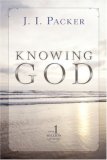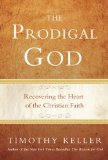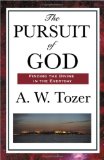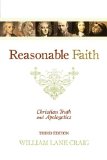I posted Part 1 of this review the other day, and I’ll post the third one next week. All of these are a part of Zondervan’s ZECNT Blog Tour, with a review copy given by Zondervan. In this post, I want to look briefly at some of the features of the commentary itself.
Each pericope is dealt with in 7 main sections: Literary Context, Main Idea, Translation and Graphical Layout, Structure, Exegetical Outline, Explanation of the Text and Theology in Application. I won’t comment on all of these, but simply make a few notes about how they are utilized in Osborne’s commentary.
Literary Context
I like the inclusion of a “literary context” section, which includes both a short paragraph or two explaining each pericope’s place in its literary context, as well as a visual outline. For instance:
VIII. The Passion and Resurrection of Jesus (26:1-28:20)
A. The Passion Narrative (26:1-27:61)
1. Preliminary Events (26:1-16)
a. Introduction- Plot to Kill Jesus (26:1-5)
b. Anointing of Jesus (26:6-13)
c. Judas’s Betrayal (26:14-16)
So, if the pastor is preaching on 26:6-13, they not only see where it fits in the larger scheme of the Passion Narrative, but Osborne also points out that this story “is deliberately placed here by Mark and Matthew to supply a contrast with Judas’s betrayal” (p948, although I’d also argue it contrasts with the plot of kill Jesus in 26:1-5). Such features are hardly revolutionary, but they help busy pastors grab some insight into a passage that will come in handy in sermon preparation. While some pastors may have looked at these stories as disconnected episodes, they can see how Matthew structured his narrative to highlight certain features.
Translation
 A commentary that provides the author’s translation- unremarkable. A commentary that provides the author’s translation in a modified “sentence flow” format- genius. Throw in a few insights from the world of discourse analysis and you have what will be, in my opinion, the single most helpful aspect of the ZECNT series (perhaps moreso in the epistles, but still helpful in narrative literature as well). By lining up the main clauses to the left of the translation, and indenting the subordinate clauses, the reader will be able to see exactly what Osborne thinks the main points are for each passage and how the passage as a whole flows (sorry, I wish I had an electronic shot to post here, and it’ll take too long for me to type up myself).
A commentary that provides the author’s translation- unremarkable. A commentary that provides the author’s translation in a modified “sentence flow” format- genius. Throw in a few insights from the world of discourse analysis and you have what will be, in my opinion, the single most helpful aspect of the ZECNT series (perhaps moreso in the epistles, but still helpful in narrative literature as well). By lining up the main clauses to the left of the translation, and indenting the subordinate clauses, the reader will be able to see exactly what Osborne thinks the main points are for each passage and how the passage as a whole flows (sorry, I wish I had an electronic shot to post here, and it’ll take too long for me to type up myself).
So, for example, the antithetical nature of Jesus’ teaching on prayer in Matthew 6:5-15 is easy to see in this section: hypocrites pray like this, and this is their reward; you should pray like this, and this will be your reward. The “unexpected insertions” into the genealogy of Matthew 1 are even easier to spot because they’re indented under each main clause. Like I said, I do think this feature is most useful in epistles, where the logical flow of a passage is perhaps more difficult to understand.
The reason I said I think this will be the most useful feature of this series is simply from my experience in hearing thousands of sermons over the years. One of the struggles in expository preaching, where a preacher focuses on one main text (usually) is that many preachers think in terms of bullet points rather than flow of thought. Sermons are structured in a way that we want: 3 points, whether or not they flow together or demonstrate any progression is a relatively minor concern. But this feature will help pastors see that they can still get “bullet points,” only now they can have a bit more confidence that their sermon points are the main points of the passage and that they do in fact fit together coherently.
Explanation of the Text
This is the section that is traditionally thought of when the word “commentary” is used, and it is the single most important feature of any commentary. As I stated in Part 1 of this review, I was not able to spend as much time reading through this commentary as I would like for a review because of the time constraints. But I’ve read enough to get an idea of how Osborne utilizes this section.
The use of Greek is prevalant throughout, along with English transations of all Greek words and phrases, although I do think those without any Greek knowledge could still benefit from it. Osborne comments on the text, one clause or sentence at a time, although even with all the Greek, I didn’t get a sense there’s much discussion in terms of syntax and more “upper level” grammar (but maybe a little more digging would prove me wrong).
One helpful aspect of Osborne’s approach is that he will occasionally offer a list of options for a passage (as opposed to simply mentioning them in the text) with appropriate footnotes for the interested reader. So if the reader wants to look into the four options (of many more) presented on the meaning of “fulfill” in 5:17 they can easily do so. Osborne’s surveys are quick and he is always clear where he stands.
Theology in Application
At the end of each pericope, Osborne offers a handful of suggestions for how the teaching of this passage could be applied. He only gives a paragraph or two to each point, but enough to spur on some thought. This is always where I get a little worried about commentators, since they’re writing for a very general audience and their application ideas are not always connected to the text. But Osborne’s comments are mostly preliminary, such as “foregoing rights” (on Matthew 17:24-27) or a couple paragraphs on the important of obedience to Christ (on 7:13-29). Once in a while I ran across something that made me cringe, such as “In Third World situations, social concern is the best evangelistic tool” (p367), which strikes me as an awfully simplistic answer to an incredibly complex situation (not to mention a statement in desperate need of some nuance). And more often than not it seems Osborne is assuming an audience of people just like him, as seen is his use of “we” without any clarification. But overall, I appreciate the obvious pastoral heart of Grant Osborne.
In Part 3, I’ll give some brief, final thoughts on the commentary and how it fulfills the vision of the ZECNT.












ZECNT Blog Tour: Osborne on Matthew, Part 3
Posted in book review, tagged commentaries, Grant Osborne, Matthew, ZECNT on Tuesday, December 21, 2010| Leave a Comment »
Thank you to Zondervan for a review copy of Grant Osborne’s commentary on Matthew and an opportunity to be a part of the ZECNT Blog Tour. See also Part 1 and Part 2 of this review.
While my first post of this series looked mostly at the overview of the series and the introduction, and the second at specific features within the commentary proper, this post’s goal is to give my final thoughts on the commentary as a whole. Given the fairly unique nature of the ZECNT series, I think it might be helpful to break my final thoughts down into two main sections: features and commentary.
Regarding the features, the ZECNT nails it pretty well. Sure, maybe it didn’t need all 7 sections, and I would have loved the “sentence flow” to be in Greek rather than Osborne’s English translation. But, as my second post details, the features aren’t wasted, and they actually fulfill their purpose. The form helps facilitate the function. The ZECNT team is to be commended for a creative approach to the commentary genre, one that hits the target “busy pastor” audience well and should help in sermon preparation.
But every commentary needs to be judged largely on the ability of the author to explain the biblical text and defend his conclusions. As I’ve already said in the previous posts, because of the relatively short amount of time I’ve had with the commentary I have not been able to spend as much time as I would like in order to give my opinion on the matter. It’s important to me that I need to get a strong grasp of the commentary before I begin recommending it over other trusted ones, and 1100+ pages is tough to wade through quickly.
My sense as I read through some of it is that Osborne is an excellent evangelical commentator. His conclusions are in the mainstream evangelical camp; there is nothing world-rocking to be found in these pages. He does survey the options, but is clear where he stands on each matter. The Gospel of Matthew is well served in the commentary world, with Carson, France and Blomberg holding down the camp in the “intermediate category,” and Allison and Davies, Hagner, Turner, Nolland and Keener in the larger, more technical camp. Given the prevalance of Greek in the commentary, Osborne’s would fit the “technical” category, though would be much more accessible than Allison and Davies or Hagner to the pastor whose Greek has slipped some. For the pastor looking for a solid evangelical commentary, Osborne would be an excellent choice, especially given the creative and time-saving approach to the commentary layout. His pastoral heart, in my opinion, also sets him apart, as it’s clear he has experienced the struggles of most pastors in sermon preparation and genuinely wants to help them.
The series editors are to be commended for an excellent concept and approach to the ZECNT series, and Grant Osborne is to be commended for executing it so well.
Read Full Post »